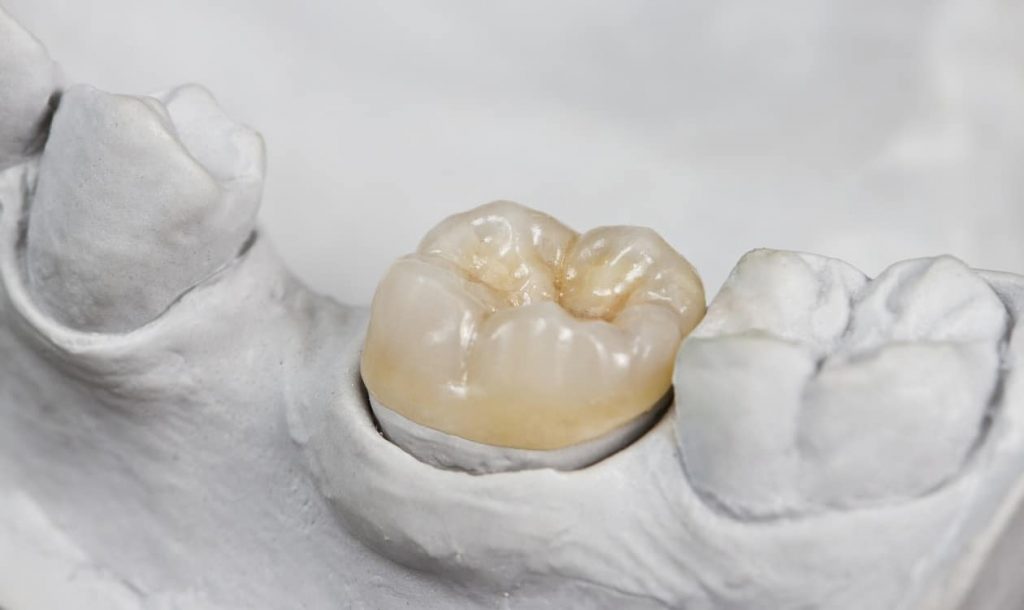Dental Crowns
A dental crown is used in restorative dental care and is essentially a tooth cap that improves the strength, appearance, structure or function of a tooth. Some of the reasons your dentist may recommend a dental crown is to provide better structure and strength to a tooth that has been extensively damaged by injury or decay and which will not benefit from a large filling, to protect a weak tooth against fracturing, to provide strength to a tooth that has fractured, to serve as support for a bridge, to cover up and make functional a dental implant, to cover up a poorly shaped or extensively discolored tooth, or to provide structure and support to a tooth that has received a root canal.

How a Dental Crown is Made
Dental crowns can be made out of porcelain or ceramic that is matched to the color of your natural teeth, gold or metal alloys and acrylic. While porcelain crowns are more cosmetically appealing because can be better hidden in the mouth due to their color, metal alloys are often the most highly recommended materials–especially on back chewing teeth–because they are stronger. Another option is bonding porcelain to metal, so that one gets both the strength and cosmetic benefits of both the metal and the porcelain.
In order to receive a dental crown, one must first make an appointment with their dentist. It is important to consult with the dentist in order to determine whether a dental crown is truly the best option, since it will require making irreversible changes to your natural teeth.
Once you and your dentist have determined that a dental crown in appropriate, the dentist will need to prepare your tooth (or teeth). This means reducing the size of the tooth so that the crown can fit over it and in between your other teeth. By filing down the tooth, your dentist will remove tooth enamel which cannot grow back. This is why the process is irreversible. In some rare cases where the tooth is extensively damaged by injury or decay or badly broken, your dentist may find it necessary to fill in and build up the tooth in order to support the crown.
An impression is then made of the tooth that has been prepared for a dental crown, as well as the surrounding teeth. This impression is what the dental laboratory will use in order to make a unique crown that will fit perfectly in your mouth. If you have selected a porcelain crown, your dentist will take this opportunity to match the correct shade of your natural teeth. Then your dentist will install a temporary crown in order to protect the prepared tooth and help preserve your ability to eat and speak properly.
The dental laboratory will use the impression of your tooth in order to make your crown, and will then send it back to your dentist. Your dentist will remove the temporary crown and fit the new crown into place, making any necessary minor adjustments. In some cases, your dentist may choose to use temporary cement on your crown so that you can wear it for a few weeks and report on how it feels. This way your dentist can make any last adjustments that are necessary prior to permanently cementing it into place. It can take some time to get used to a crown, but it should eventually look and function just like a healthy, natural tooth.
Though they can sometimes become loose or fall out, crowns can also last a considerable length of time when they are properly taken care of. Taking care of them is really as simple as treating them like your natural teeth–brushing and flossing them every day and receiving a dental examination and cleaning once every six months. It’s also best to avoid chewing on hard foods, ice and other hard objects like pens or pencils.
To learn more about dental crowns or to find out whether a dental crown is appropriate for you, contact Dr. Nurminsky today.

